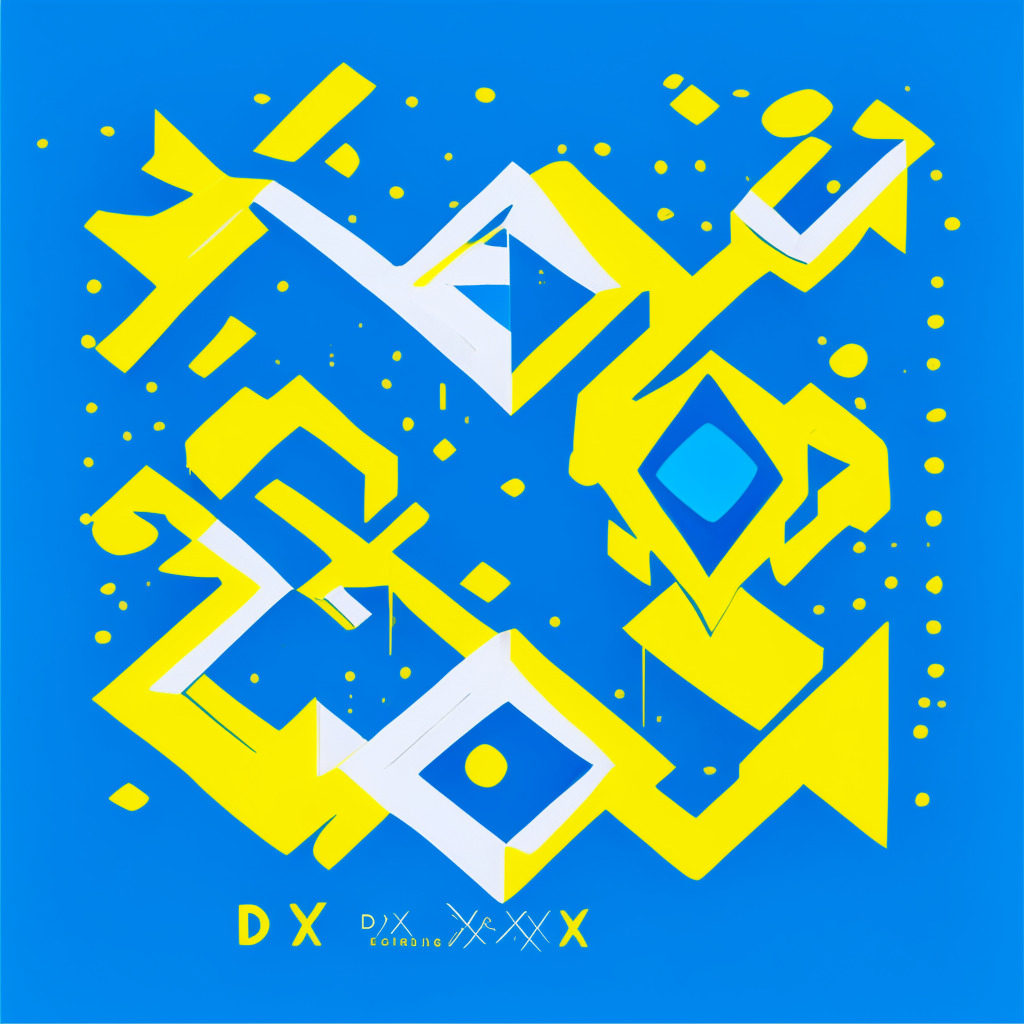The Digital Assets Summit by SIBAN discussed Nigeria’s regulatory stance on blockchain technology. Stakeholders addressed concerns over the Central Bank’s reluctance to adjust crypto policies. National IT Development Agency’s new Blockchain Policy shows government’s progressive stance, focusing on Web3 Education to improve blockchain’s penetration despite language barriers and regulatory uncertainties.
Search Results for: Art Blocks
Decoding the Story Protocol: A Blockchain Revolution in Intellectual Property Management
Story Protocol, a startup using blockchain technology to track intellectual property (IP), has secured over $54 million in funding. The platform aims to democratize IP creation with a universally adaptable IP vault, streamlining the complex processes in maintaining IP, especially in the context of generative AI.
dYdX’s Bold Leap: Migrating from Ethereum to Cosmos with Decentralized Order Books
“dYdX is introducing decentralized order books to their platform and is shifting from the Ethereum network to the Cosmos network. CEO Charles d’Haussy proposes an innovative blend of decentralization and speed, hosting order books within the validators. This ambitious transition seeks to achieve a ‘purely decentralized’ order book exchange while ensuring high-speed crypto derivative responses.”
Unmasking the FTX Scandal: A Crucial Moment for Crypto Regulation or Risk to Fair Defense?
“In the saga of FTX’s denounced founder, Sam Bankman-Fried, the DOJ asserts he has adequate technology for his defense. Amid skepticism and accusations of misappropriation of FTX customer deposits, the case underscores blockchain’s potential for transparency and highlights the need for well-governed crypto exchanges.”
Ethereum Layer 2 Outage and Genesis Spot Trading Discontinuation: Probing the Crypto Landscape
In its first significant mishap, Ethereum Layer 2 network, Base, experienced an outage halting new block production. Despite quick repair and recovery, concerns about the reliability of such newer networks have been raised. The future of blockchain may be promising, but these newer platforms must work on technical robustness and gaining users’ trust. Meanwhile, Genesis Global Trading announced the voluntary cessation of its spot trading services, reflecting the stiff competition and constant evolution in the crypto market.
Sybil Attack on Connext Network: Exploring Security vs Convenience in Decentralized Trust Systems
The Connext Network, a protocol for native blockchain bridges, recently endured a ‘sybil attack’— a suspicious wallet exploited the protocol’s token airdrop, making over 200 claims. This unexpected event underscores the critical balance between security and convenience in decentralized trust systems.
Navigating the Bull-Bear Tug of War: A Dive into Crypto Market Performance
The latest crypto market analysis shows a mixed performance with Bitcoin exhibiting a marginal loss and Ethereum showing a lack of demand. Despite obstacles, Bitcoin’s dormant supply hit a new high, whereas Binance Coin depicts a bearish trend. Contrastingly, XRP attempts a strong rebound, while Cardano and Dogecoin display indecisiveness and cling respectively to specific support levels.
Crypto Corruption Scandal in South Korea: An Intense Debate on Market Regulations
“South Korean prosecutors’ attempts to issue arrest warrants for a former golfer and the CEO of crypto exchange, Bithumb, on corruption allegations have reignited debates on crypto market regulations globally. These cases, attesting to potential corruption and manipulation within the industry, highlight the need for effective regulation in this rapidly evolving sector, while also raising concerns about impacting its growth and innovation.”
Driving the Future: Jamaica’s CBDC ‘Jam-Dex’ and Its Potential Impact on Public Transport
Jamaica’s public transport sector is expressing interest in the country’s central bank digital currency (CBDC), Jam-Dex. Aldo Antonio, NTAG executive chairman, suggests that Jam-Dex could improve operational efficiency, cut costs, and reduce risks for drivers. However, successful implementation relies on customer adoption and integration with current fintech trends.
The Tale of Two Countries: Bitcoin Adoption Variance in Argentina and El Salvador
Argentina wrestles with spiralling inflation, meanwhile Bitcoin takes root driven by economic conditions and political changes. Conversely, El Salvador, the first country to mark Bitcoin as legal tender, responds with caution due to its volatility and complex integration into existing infrastructures.
Mainstreaming Crypto: The Future of Digital Transactions Unfolds on Social Media Platforms
“Social media giant, X, has established cryptocurrency payments for its global audience, following recent approval from regulatory authorities. This brings good tidings for X’s network of 400 million users who can potentially interactively share via cryptocurrencies, transforming the social media platform into an ‘everything app’.”
Locked Up Blockchain CEO and the Fight for Right to Defense: A Deep Dive into the FTX Legal Battle
The legal counsel for Sam Bankman-Fried, former CEO of FTX, has requested his temporary release from the Metropolitan Detention Center to actively participate in his defense. His capacity to defend himself is severely impaired due to infrequent communication with legal team, limited access to work data, poor internet connectivity and excessive discovery data from the prosecution. His attorneys stress his Sixth Amendment rights of a fair trial and effective legal counsel.
Unveiling Cointime Economics: A New Perspective on Bitcoin’s True Economic Worth
“Investment company Ark Invest and security firm Glassnode have presented a new approach to understanding the Bitcoin economy named “Cointime Economics.” The whitepaper describes a measurement system called “cointime”, which seeks to portray Bitcoin’s true value based on its dormancy period. It includes introducing metrics like “liveliness” and “vaultedness” for evaluating Bitcoin’s economic trends.”
Bitcoin’s Rising Mining Difficulty: Potential Price Surge and Market Impact
“The Bitcoin mining difficulty recently hit an all-time high of 55.62 trillion hashes. This difficulty, adjusted every two weeks, affects mining speed and is tied to Bitcoin’s network computational power. High mining difficulty could push prices up as miners anticipate a Bitcoin value rebound and invest more resources into mining.”
1inch Joins Coinbase’s Ethereum Layer 2: The Progress, Promise and Pitfalls of Base Network
Decentralized exchange aggregator 1inch has partnered with Coinbase’s Ethereum Layer 2 network Base, aiming to leverage liquidity from 15 functioning decentralized exchanges. The agreement introduces 1inch’s limit order protocol, contrasting from standard instant price conversions, and integrating Base within robust Layer 2 networks like Optimism, Arbitrum, and zkSync Era. Despite impressive growth and transaction rates, Base faces challenges with a high proportion of meme coin activity, suggesting potential volatility.
Unraveling the Pros and Cons of ARK Invest and Glassnode’s Cointime Economics in Bitcoin Analysis
ARK Invest and Glassnode propose a new Bitcoin economic analytics framework, Cointime Economics, introducing coinblock – a measure considering time held in Bitcoin custody. Critics argue it complicistically outweighs veteran hodlers against newcomers, possibly confusing traditional users. Despite complexities, its future potential remains to be seen.
Digital Yuan: An Impetus for Cross-Border Payments or Just a Fleeting High?
“The Chinese digital yuan, or e-CNY, is being recognized as a major driver in the surge of cross-border payments between mainland China, Hong Kong, and Macau. Despite Hong Kong and Macau’s separate economies and currencies, initiatives from the People’s Bank of China have enabled cross-border e-CNY transactions. Questions still remain about potential regulatory hurdles and the long-term impact of these initiatives.”
OP Stack Vs. ZK Rollups: Navigating the Future of Layer-2 Blockchain Technology
Major crypto enterprises like Coinbase, Binance, and a16z are setting up their own “layer-2” blockchain networks using OP Stack, despite the belief that promising layer-2 solutions will come from “ZK rollups” and not optimistic rollup technology. However, the choice of OP Stack may be due to its ease of setup. ZK rollups, while promising, require advanced hardware and high energy consumption.
Blockchain vs Traditional Payments: A Detailed Analysis of Utility, Constraints and Potential
Cross-border payments demonstrate the utility of digital currencies, yet adoption faces challenges like technological issues, competition, and regulatory constraints. Blockchain Officer, Paul Brody, suggests basic fiat payments are faster and cheaper through centralized systems, while blockchain payments can impact speed and cost due to duplication across nodes. Blockchain’s potential may not lie in replacing existing models, but in altering the transaction rules through tokenization and inherent programmability.
Controversy over FTX Bankrupt Crypto Exchange Settlement Plan: A Clash of Transparency VS Simplicity
The bankrupt crypto exchange FTX’s settlement plan for ‘Small Estate Claims’ met controversy as the Official Committee of Unsecured Creditors expressed dissatisfaction, supported by Andrew R. Vara who found lack of detail and clarity in the plan. Despite FTX’s efforts to address the concerns, this case emphasizes the necessity of stringent regulations to ensure fairness and transparency in blockchain technology’s potential for simplified claim settlements.
Binance’s Juggling Act: Navigating Regulatory Challenges and Growing Pains in Crypto Markets
“Binance, a prominent cryptocurrency exchange, is facing regulatory challenges and payment processor issues in Europe, limiting withdrawals. However, this situation underscores the necessary growth and maturation of global digital asset markets, and highlights the need for increased regulation and security in the volatile crypto space.”
Navigating Through the Storm: China’s Deflation and Impact on Bitcoin’s Future
China’s economic downturn has sparked concerns over potential negative impacts on Bitcoin and other growth-dependent assets. With the onset of deflation, falling prices could amplify debt burdens, stifling spending and investments. These economic shifts underline the need for stakeholders, particularly those invested in Bitcoin, to move forward carefully.
Mastercard’s Venture into Central Bank Digital Currencies: Paradigm Shift or Adventurous Detour?
“Mastercard has initiated a unique forum for stakeholders in the crypto domain to deliberate on the issue of central bank digital currencies (CBDCs). CBDCs are not the same as cryptocurrencies as they are digitized versions of existing fiat currencies backed by issuing governments. Mastercard’s CBDC alliance aims to foster groundbreaking innovations and efficiencies in the digital asset space.”
CME Bitcoin and Ethereum Rates for Asia: Boosting Crypto Legitimacy or Amplifying Market Risks?
CME Group is launching Bitcoin and Ethereum reference rates for Asian investors, indicating a growing institutional interest in digital assets. However, the overwhelming reliance on these rates could potentially amplify the risk of massive sell-offs in a volatile market climate.
Unleashing the Microchain Strategy – Linera’s Innovative Solution to Blockchain Scalability Issues
Emerging blockchain project, Linera, has secured $6 million in funding for team expansion and protocol development. The protocol, introduced by ex-Meta Novi engineer Mathieu Baudet, innovatively addresses scalability issues by utilizing “microchains” within the main blockchain, potentially improving Web3 app interactions and reducing infrastructure unavailability during traffic peak times. However, the extensive interconnectivity this model introduces could create potential vulnerabilities.
Bitcoin’s Fee-to-Reward Ratio: Balancing User Experience, Security and Sustainability
Bitcoin’s fee-to-reward ratio critically impacts transaction speed, network security, and overall stability of the blockchain. In times of heavy traffic, users potentially pay more for quick verification, fostering network efficiency and aiding miners’ profitability. Ultimately, this ratio could dictate Bitcoin’s future economic sustainability.
Navigating Blockchain Revolution: Potential Boon or Pending Chaos?
“Blockchain technology promises a decentralized future, eliminating intermediaries and promoting transparency, data integrity, and traceability. It’s not without issues: irreversible errors, security vulnerabilities, and high energy consumption. The unclear regulatory landscape poses additional challenges and uncertainties for this potentially revolutionary technology.”
Decrypting Privacy: Navigating the Complexities of Blockchain and Cryptocurrency Security
“The rise of blockchain technology has revolutionized financial transactions but also raises privacy concerns. Transactions are logged on public ledgers, implying transactions can be traced back to specific addresses. Strategies for maintaining privacy include using encryption tools, maintaining wallet anonymity, and exploring privacy-focused cryptocurrencies, also considering DeFi platform exposures.”
Unmasking the Zunami Protocol Price Manipulation: Over $2.1 Million Lost in Cyber-Offensive
The Decentralized Finance (DeFi) platform Zunami Protocol has suffered a price manipulation attack involving its stablecoin pools on Curve Finance, leading to potential losses of over $2.1 million. The exploit participants reportedly used a flash loan to significantly alter the price, resulting in stolen funds. The event underscores the necessity of stringent security measures for DeFi ecosystems.
PayPal’s New Stablecoin PYUSD: Exploring its Potential and Uncertainties
“PayPal’s recently unveiled stablecoin, PYUSD, is predicted to enhance payment efficiency. Despite optimism, reception may vary due to competition from central bank digital currencies and yield-bearing stablecoins. Current investors appear unbothered by the lack of yield and focus on safety and availability.”
Unlocking the Potential: SAND Token Embraces Market Flood and Its Impacts
Metaverse platform, Sandbox’s native currency, the SAND token, is set for an unlocking period starting from Monday, releasing 332 million tokens, or over 16% of the circulating supply into the open market. Despite potential bearish trends, this gives token holders their first opportunity to sell positions.
India’s Plan for Crypto Tokens on Native Web Browser: Progress or Roadblock?
India plans to integrate crypto tokens into its upcoming native web browser, a move propelled by its Ministry of Electronics & Information Technology. This initiative aims to foster developer ingenuity and wider crypto adoption, despite facing regulatory challenges. A prominent feature will be digitally signing documents using crypto tokens within the browser.































